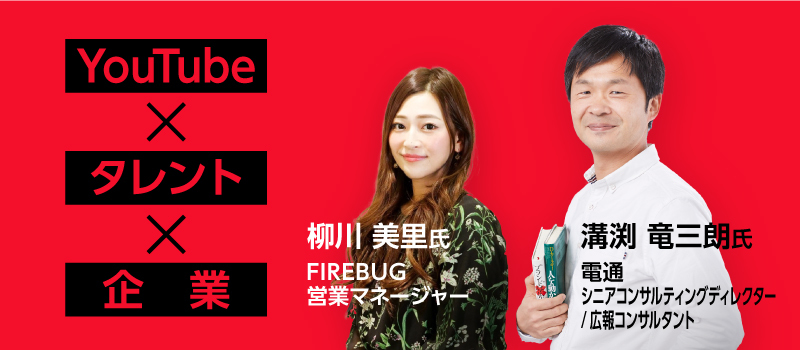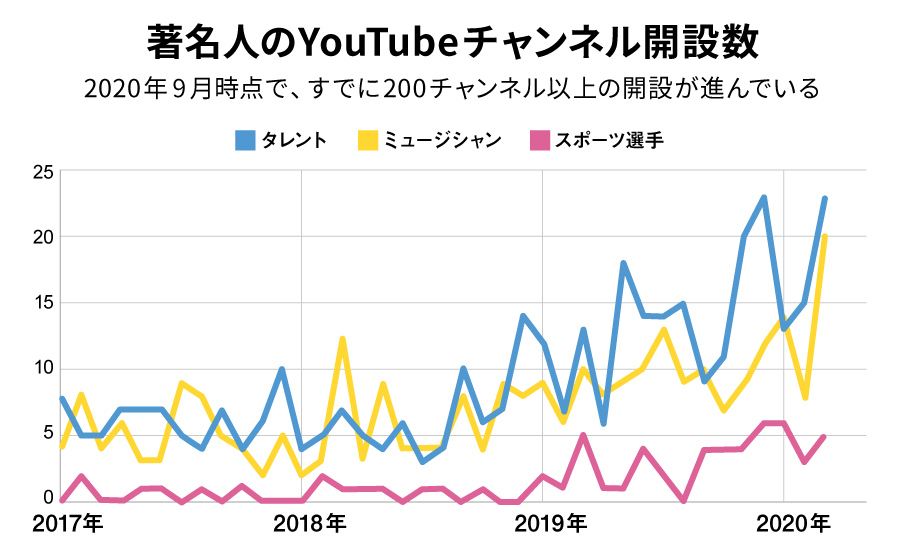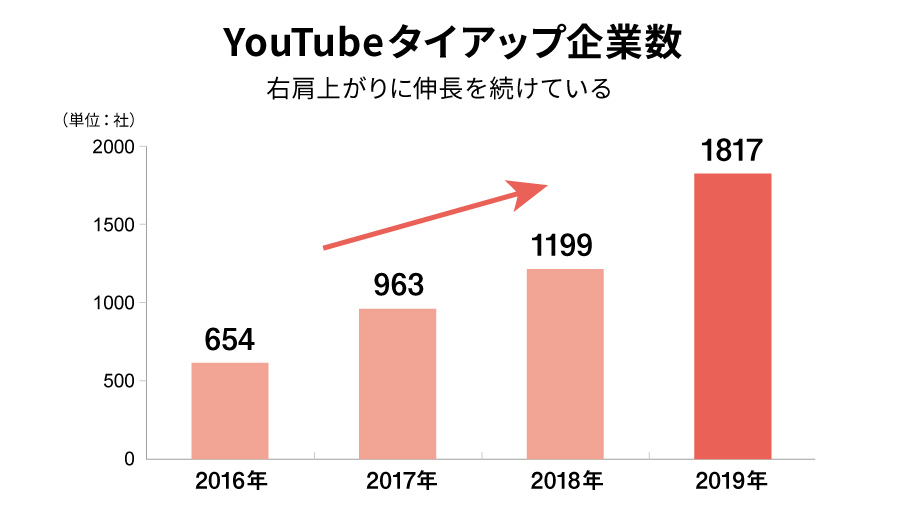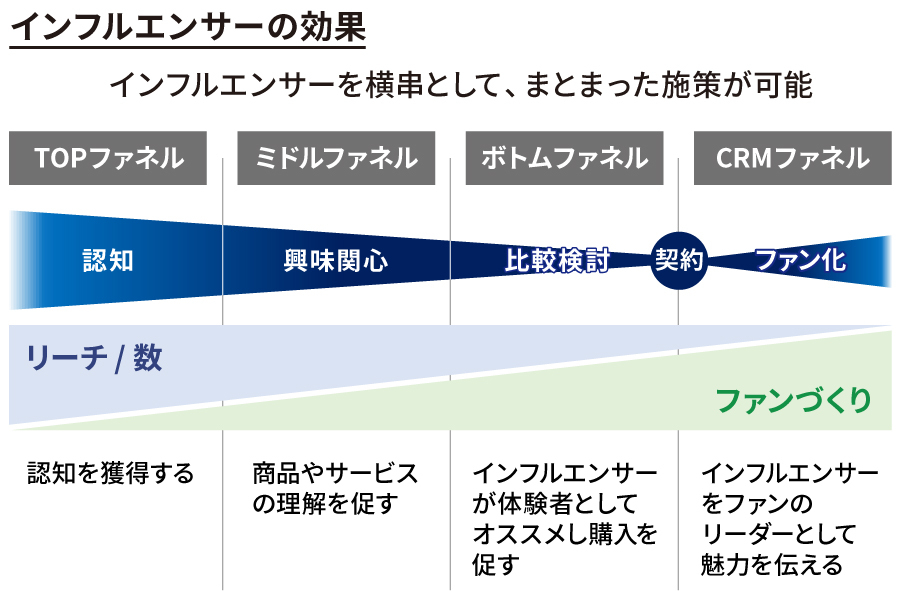As time spent at home increased during the pandemic, YouTube gained a broader audience across age groups and heightened its presence. In recent years, it has become a crucial platform for both TV celebrities and corporations. What is the current state of the YouTube market, where celebrities are launching channels one after another? What are its attractions? And what is the current state of corporate marketing activities utilizing YouTube?
FIREBUG's Sales Representative Misato Yanagawa, who handles content production for talents and companies in the digital sphere, and Dentsu Inc.'s Ryuzaburo Mizobuchi, an expert in influencer strategies, held a discussion on the theme "YouTube × Talents × Companies."
※FIREBUG: Primarily active in the digital sphere, FIREBUG handles a wide range of services including talent SNS consulting, content production and support, and artist production. Centered on entertainment, it also provides multifaceted marketing solutions to companies. It formed a business alliance with Dentsu Inc. in November 2020.

Talent YouTube Channel Launches Surge
Yanagawa: While mass media was the primary platform for talent activities until now, the number of YouTube channel launches began increasing significantly starting in 2019. A major factor was that talents active on YouTube prior to this were rapidly growing their subscriber counts and generating buzz. Furthermore, since last year, the pandemic has severely restricted opportunities for talent activities, accelerating the momentum of channel launches. In tandem with this, there's also been an increase in companies seeking tie-ups where they piggyback on talent content, rather than creating corporate-led video ads.

Trend in Celebrity Channel Launches on YouTube (Ebily Research)

Source: Kamui Tracker
Mizobuchi: It's true that YouTube is becoming indispensable for companies, whether for marketing or PR. I currently support corporate PR activities utilizing influencers, and even in this field, requests from companies wanting to use YouTube and influencers have really increased lately. I also get consulted by B2B companies and companies that haven't produced consumer-facing videos before about how to utilize YouTube.
Yanagawa: For talents, YouTube is a platform where they can express themselves more freely than in mass media. New charms can be conveyed there, sometimes leading to more work. For example, it's not uncommon for talents with low recognition to go viral on YouTube and become instantly known. Furthermore, once subscriber counts or view counts reach a certain threshold, substantial ad revenue becomes possible. As digital transformation (DX) advances in the entertainment market, YouTube's cost advantage—free posting—will likely sustain this trend.
On the other hand, talents often face challenges like "not knowing what kind of videos to create even after starting a channel" or "lacking the know-how for more profitable content or securing corporate tie-ups." Our company is seeing increased requests from talent agencies for YouTube content production and sales support.
TV personalities break through the filter bubble barrier
Yanagawa: YouTube has often been perceived as a platform primarily for younger audiences. The entry of widely recognized celebrities broadens its viewer base, becoming a driving force for YouTube's further growth.
Mizobuchi: That's right. In recent years, content aimed at people in their 30s or 40s is less likely to appear on the top page of YouTube viewed by teenagers, for example. This is the so-called "filter bubble" environment. On the other hand, content deemed highly compatible with frequently watched videos or viewer attributes is repeatedly displayed automatically. This phenomenon, akin to voices echoing in a highly soundproofed room, is called an "echo chamber."

While these phenomena on digital media like YouTube have both positive and negative aspects, one positive is that they can deepen viewers' thinking. Conversely, television's strength lies in its lack of such filters, allowing viewers to encounter diverse information.
Television offers broad access to information, while digital media allows for deeper exploration. The bridge between these two is the talent active on television. If a famous talent has their own channel, it's more likely to appear on the YouTube homepage viewed by younger audiences, even if the talent belongs to a different generation. In this sense, television talent plays a significant role, as they have the potential to transcend these filters.
Yanagawa: For talents themselves, if a project they upload to YouTube goes viral, it can lead to gaining new fans. Furthermore, if viewers become interested in the talent through their YouTube content, it can also create a ripple effect, potentially boosting viewership for the TV shows or other media featuring that talent.
YouTube × Talent: Penetrating the Marketing Funnel
Mizobuchi: So, what value does "YouTube × Talent" bring to corporate marketing activities? Yanagawa-san mentioned earlier that tie-up examples on YouTube are increasing. When considering marketing, we often represent the flow from awareness to purchase to fan conversion using a funnel diagram. The diagram below adds the value of influencers (here, assuming TV celebrities with YouTube channels) to that funnel.
Typical strategies include TV commercials for "Awareness," online ads for "Interest/Engagement," online search for "Comparison/Evaluation," and point programs for "Fan Conversion." Different strategies are required for each funnel stage. This meant up to four distinct strategies were needed, from the top funnel to the CRM funnel.
However, by utilizing influencers, it becomes possible to implement cohesive strategies with influencers as the cross-cutting element. This is because when followers see content where influencers use the product or service, it enhances "Awareness" and "Interest/Engagement." Furthermore, when influencers show positive reactions, it leaves a favorable impression on followers, creating differentiation from competitors and potentially driving "Fan Conversion."
Traditional TV commercials were fundamentally company-driven. They featured celebrities within stories created by the company. YouTube, however, operates in reverse: the key is how companies integrate themselves into stories created by celebrities. This isn't about which approach is better; it's about the vastly expanded range of communication with consumers, enabling diverse contexts. Within this landscape, I sense an increasing number of companies recognizing that "having a specific 'person' genuinely love our product further elevates its value."
"Who tells the story" becomes added value. The era where "authenticity" moves viewers
Mizobuchi: In the PR world, we say "information enhances the value of things." Take a cup of coffee, for example. Its value increases if there's a story behind it – a special origin, a unique roasting method, or even the fact it's frozen-stored. Similarly, even if the product or service itself doesn't change, its value can rise based on "who tells the story" and "what kind of story is told."
Yanagawa: YouTube is a platform where talent can easily express their genuine thoughts in their own words. When they speak more authentically, it resonates with viewers and increases persuasiveness.
Mizobuchi: Today, "who says it" has become a more crucial factor in conveying information than "what is said." When an influential figure speaks about a product in their own words to the target audience, it adds value to that product. In the PR world, enhancing a company's product value and communicating it to customers through such methods is now a sought-after differentiation strategy. The rise in corporate tie-ups via YouTube likely stems from the appeal of this new advertising approach within a space where "authenticity" resonates.
But if you're asking a talent to promote your product, they need to genuinely like it first. So whether they truly love it becomes crucial.
Yanagawa: You're absolutely right, Mizobuchi-san. Recently, we're seeing more requests from companies themselves saying, "We want to use celebrities who actually use our products." For example, an apparel company might say, "If we could get a celebrity who genuinely loves our clothes to promote us!" I feel like companies' perceptions and requests are shifting a bit from what they used to be.
Another recent trend is the expansion of industries using YouTube for advertising collaborations. Previously, it was limited to certain sectors, with beauty being the category that particularly resonated with YouTube ads. Videos where influencers shared various makeup tutorials often went viral. However, as more celebrities join YouTube, we now see collaboration requests from industries like real estate, insurance, and finance—sectors that previously showed little interest in YouTube ads. While these industries were hesitant due to YouTube's primarily young audience, we're now seeing requests for celebrities who resonate with housewives. This signals a clear shift to the next phase in advertising sales.
Mizobuchi: In terms of content, we're seeing new approaches like influencers touring factories or traveling. New methods will continue to emerge. We also want to enhance our support for companies showing interest in YouTube.









